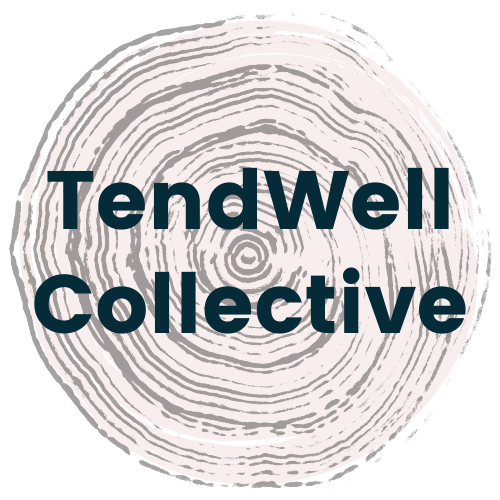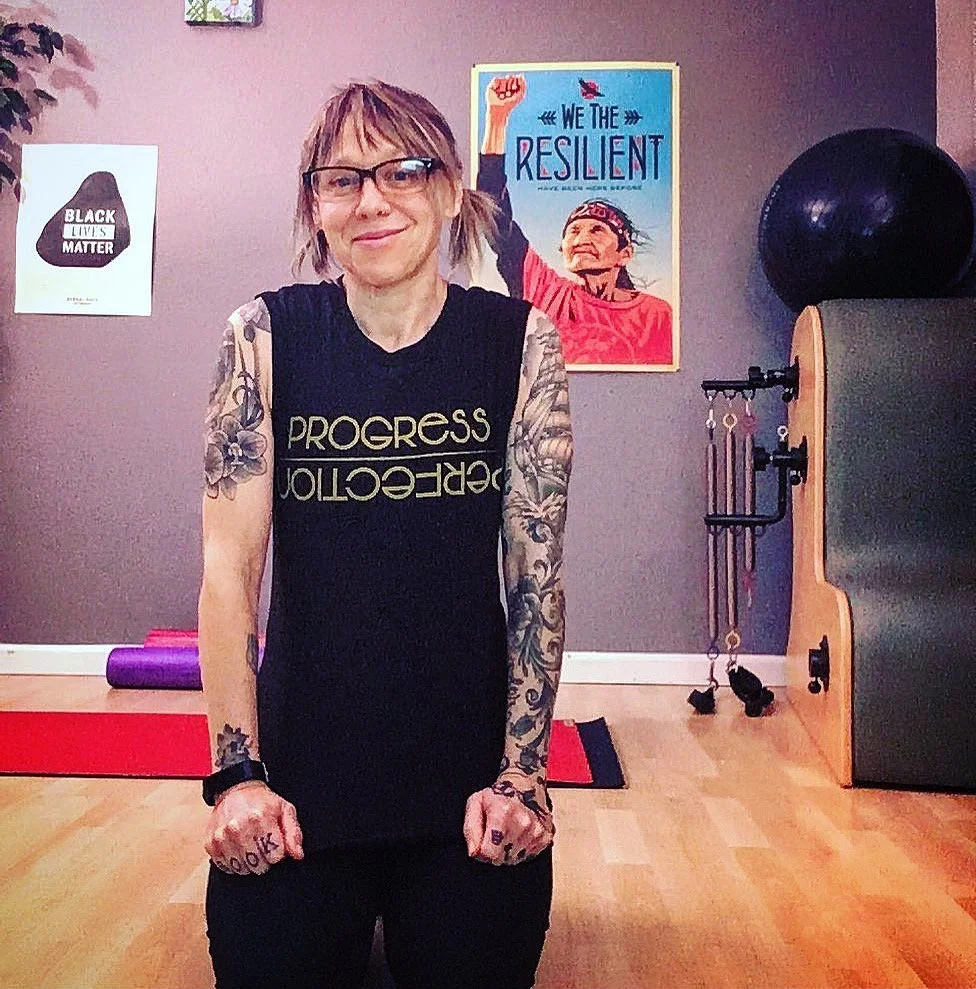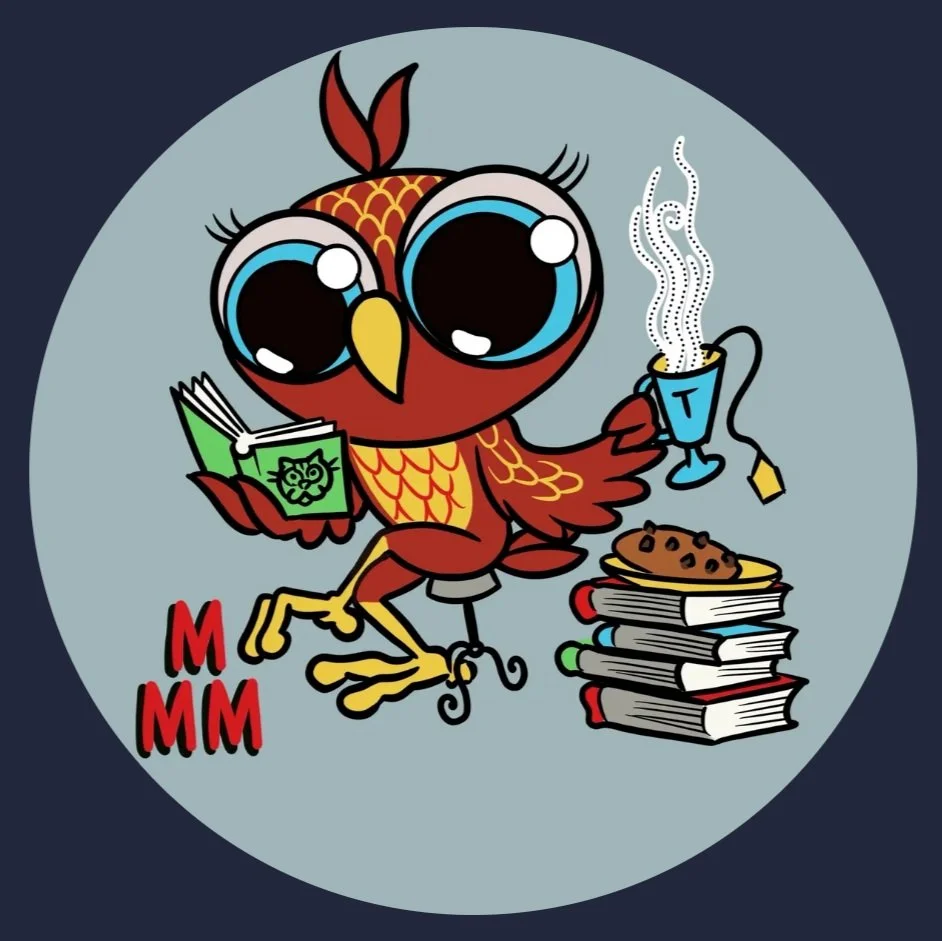Pilates Inspired Mindful Movement
Megan Windeler, author of post
Is Pilates as Good as Everyone Says?
Many of you have sent me the link to this New York Times article on Pilates.
I agree with the article that The Pilates Method is a gem.
It is an effective blend of flexibility and strength training for the muscles we use in our daily lives.
It helps our posture and therefore can help reduce pain.
It is also a method that asks us to focus on details, grow in our mastery of skills and be present.
“Movement is a Hoot!” from Megan’s shop (click image to open). A percentage of the proceeds are donated to Trans Life Line & Chicago Freedom School. Design by Dannyboy Smith.
So do I teach Pilates?
What we practice in my classes would not be called Pilates by many in the Pilates community. We don't do the traditional exercises in their traditional order.
I don't teach heavily loaded spinal flexion because many in our community have neck issues and/or low bone density. The heavily loaded spinal flexion exercises are not the friendly to those conditions.
They are also very easy to get wrong, leading you to spend years doing them in ways that stress your neck and don't get you into your core.
Taking away heavily loaded spinal flexion eliminates a lot of the traditional exercises, but it does not take away the deep work.
Which is why I call the classes Pilates Stretch & Strengthen and the whole thing we do Mindful Movement.
My goal in teaching is to offer exercises that are doable and challenging - exercises that
target our deep postural muscles,
help us with balance,
build functional strength, and
help create and maintain agility, range of motion and flexibility.
And, importantly foster a mind body connection.
Image from Grindstore
The Imperfect History of Pilates
In that way, we do very much follow both the Pilates Principles and honor the ingenuity of Joseph Pilates.
Mr. Pilates had a whole person view of health and what he saw back in his days post WWI and WWII was a society that was losing its connection to movement and daily exercise to modern conveniences. This was severing people's connection to their bodies and their organic place in the world.
People were becoming out of shape physically and mentally. He set up his system to address that. When he created his method he called it Contrology because control was the name of the game.
He was not a perfect man, and in many ways a man of his times. At the bottom of this post I have included some articles and resources to dive into if you are interested.
His method came to be synonymous with an elite method of fitness used by wealthy skinny white women promising weight loss, long lean muscles and grace.
But, the reality of his method is beautiful and adaptable and inspiring in its scope and depth. It is a wonderfully solid and vast system to riff off of and explore. Which is what we do.
Megan cozied up with a cup of tea
The Pilates Principles
The Pilates Principles - which I use to build each session are, like all things in Pilates, different depending on the legacy you follow.
Thus, there are different takes on the Principles, but they all end up focusing on the same thing, with different names.
These are the ones I use:
Stability/Range of Motion/Opposition
We are always looking for the play between stability and mobility. When we have the support of stability we can work into our agility, range of motion and flexibility. All of that helps our balance and agility out in the wild!
Opposition
This is really my favorite principle. To me it is the backbone of the the work. When we understand that we are always pressing down to go up and reaching up to be grounded our center become alive and our movements happen in the space that opposition provides.
Stamina
We are always building our muscular endurance. With the Pilates Method we are always focused on the quality of our movement, not the quantity. We want these moves we do to create the stamina we need our there in the wild world.
Relaxation/Body Awareness
After the principle of Opposition, my next favorite is Relaxation/Body Awareness. This is the idea that what we do is sustainable and that all this moving in a mindful way translates into us feeling more whole and connected to our lives.
This method wants us to be in a sweet spot mentally as we workout, a practice of being present and aware as we concentrate on details and do hard things.
Control/Concentration
I think of this as the contract we make with ourselves when we begin each session. We are there to concentrate on what we are doing, to create mastery and control of our bodies within the exercises we are doing.
Breathing
This is the key to being present in the exercises and moving with grace and strength - don't hold your breath, ride it, use it, get familiar with it.
Alignment/Precision
The architecture of each shape and movement plus how we put that into motion is important. We want to be able to be very specific about where and how to place our body and understand the trajectory of our movements.
Centering
This is the idea the all the exercises come from your core, your center, your postural muscles, your "Pilates Power House."
Flowing Movements/Coordination
We want all that precision to be done with grace (flowing movement) and to be able to add layers to the movements that challenge our mind body connection and understanding of where we are in space (coordination).
As Joseph Pilates puts it:
"Physical fitness is the attainment and maintenance of a uniformly developed body with a sound mind fully capable of naturally easily and satisfactorily performing our many and varied tasks with spontaneous zest and pleasure."
I would add to that, that this method has something for everyone. Even those with bodies that don't easily move due to injury, disability and disease. It is a method that can maintain what we have and give us space to grow in the ability to carry out our daily lives with as much ease and agency as our bodies can.
“Bookish” from Megan’s shop (click image to open). A percentage of the proceeds are donated to Trans Life Line & Chicago Freedom School. Design by Dannyboy Smith.
Keep Learning and Unlearning about Pilates
Did you know that Pilates was born in prison and inspired by cats? - Vogue article
Countering Racism in our Community - Diversity in Pilates from Balanced Body
Sonja Price Herbert - founder of Black Girl Pilates and Anti-Racism Activist
The Caged Lion by John Howard Steel - “The surprising story of Pilates — the man and the method. Part biography, part history, and part memoir, Caged Lion untangles for the first time Joseph Pilates's opaque life story and the perilous journey of his exercise program known the world over as Pilates.”
Megan Windeler shares some of her live online classes on the TendWell Schedule.
Visit Megan’s website for more classes, resources, merch, and her newsletter.





